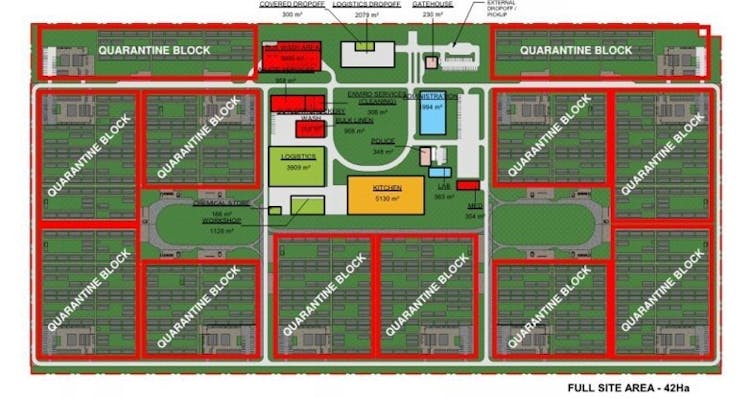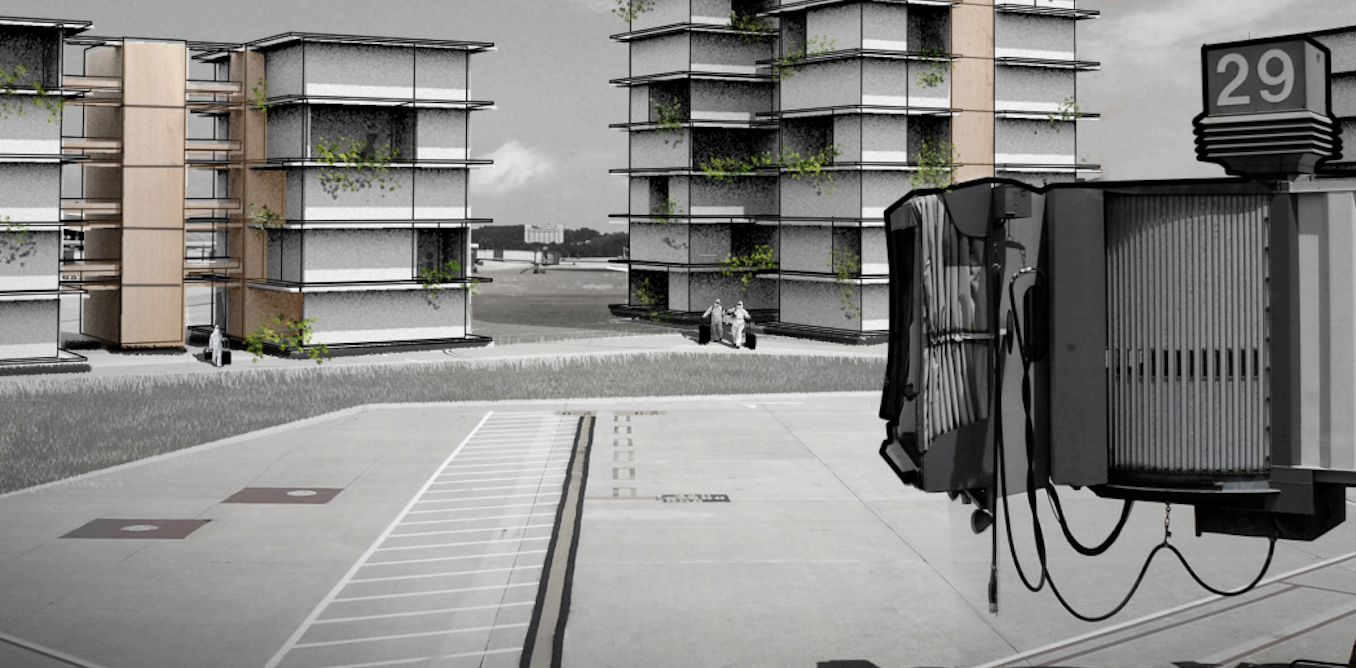the ad that the Victorian and federal governments will build a 1,000-bed COVID quarantine center in Mickleham, north Melbourne, marks a welcome end, or at least a new chapter, to point the finger at the Australian quarantine saga.
Time is running out to protect Australians from COVID, so hats off to both governments for setting an ambitious timeline that could see the facility operational by the end of this year.
But in their rush to come up with an alternative to hotel quarantine, we believe governments have failed to take advantage of the latest innovations available.
the plan for the proposed quarantine facility produced by the Victorian government is, by its own admission, little more than a specified version of a mining camp, similar to the Howard Springs facility already in use in the Northern Territory. In turn, this type of construction is reminiscent of post-war quarantine facilities built from the 1950s.
Part of the problem with the current proposal is the emphasis on “hardwareâ€, with almost no discussion of “softwareâ€. By material we mean buildings, physical structures, road layouts and infrastructure; by software we mean how it will be used, business models and processes, and “smoother†business use patterns and their technologies.
This hardware-centric approach would be more reassuring if the hardware were the best and most suitable for the use, but unfortunately the proposal has reached what it knows, and what it knows is about 70 years old.
A smarter way
We and our colleagues from Building 4.0 Cooperative Research Center, jointly funded by the federal government and a consortium of industries, are developing a cutting-edge design, called Q_Intelligent, which we submitted to the Victorian government in March 2021.
In our proposal, building services, controls, sensors and management systems (as well as well-designed and efficiently manufactured buildings) all play a role in preventing the transmission of COVID-19. One could consider this as a correction towards a more “software-oriented” approach, because it seeks to use a range of processes, techniques and technologies already available from our collaborators at Siemens to increase the work done by physical structures.
In terms of physical layout, our design avoids large common hallways, inadequate air tightness controls for rooms, or unhygienic air handling systems that have emerged as issues with the current hotel stock.
Building 4.0 CRC
As leading infection control experts have already pointed out, donga mining may have worked well so far for quarantine at the reassigned Howard Springs facility in the Northern Territory. But from an epidemiological standpoint, the current design is of concern for the proximity of neighboring verandas, especially in cases where more than one group of quarantined residents are housed in a unit.
The government’s interim staffing patterns for the new facility suggest that the separation between residents will be based on strict protocols regarding staff movements and quarantine measures to slow and limit the spread of disease, if violated.
Read more: Here’s how we should build and staff Victoria’s new quarantine facility, say two infection control experts
On the other hand, the intelligent building management system that we are developing would not wait for a breach to occur, but would aim to prevent such contact from ever being made. A door would not open, an airlock would have its contents evacuated automatically, and UV light would clean contaminated surfaces or the air in the ducts.
Some of these features, such as proximity authentication, are innovations that we regularly expect from our 20 year old cars. If we look to our now ubiquitous smartphones, there are still more opportunities to track and control movement safely and more conveniently in a more human way that wouldn’t need to reach for wristbands. punitive ankle and others. And, yes, if breached, such systems could ultimately perform near-instant contact tracing.
But such a system could only work if the “hardware” and “software” are fully integrated and planned together from the start.
An eye on the future
There are many ways to manage quarantine, and while it may be too late to incorporate our designs into the proposed Victorian facility, perhaps other states and territories embarking on construction projects could. still consider this advice.
Seeing the current proposed plan of mining dongas close together, arranged in “mini-quarters”, it is almost impossible to imagine that it was used for anything other than a quarantine facility, or perhaps a correctional facility.

Vic.gov.au
Read more: The quarantine of hotels causes 1 epidemic for 204 infected travelers. It is far from being “fit for purpose”
Q_Smart, on the other hand, was designed to be flexible, reusable, and adaptable to different locations, which, for example, may not necessarily have large amounts of flat open spaces. This would potentially allow facilities built for quarantine to be reused for other purposes after the pandemic. Transforming the building’s operational model would simply be to flip a few (virtual) switches. Depending on the use case, some controls could be turned on or off, new patterns of movement through buildings could be turned on or off almost instantly.
With more thought and development, perhaps such buildings could also be used as affordable housing, or as disaster relief accommodation or – how ironically – future hotels.
This article was co-authored by Dr Bronwyn Evans AM, president of Building 4.0 CRC and general manager of Engineers Australia.

